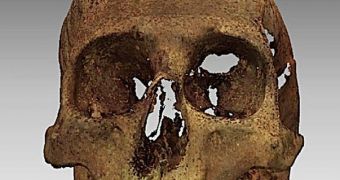In a paper published in Monday's issue of the journal Proceedings of the National Academy of Sciences (PNAS), Polish researchers formally describe a find that they've made public informally since last November, namely the fact that they were successful in identifying the earthly remains of Nicolaus Copernicus, the father of modern astronomy. Discovered four years ago underneath a Roman Cathedral, the bone fragments were first pieced together a while back, and someone noticed that they resembled the facial structure of the world-famous scientist.
By matching the DNA extracted from the bones with the one extracted from strands of hair collected from his personal books, the researchers were able to prove beyond the shadow of a doubt that the remains were, indeed, those of the great astronomer. Among his most revolutionary theories was the one that held that the Earth revolved around the Sun, and not the other way around, as the religious dogma was at the time. Heliocentrism, coupled with his other work, is largely credited to have significantly contributed to the onset of the Scientific Revolution, which has lasted to this day.
The great scientist, who was also an economist, politician, military leader, mathematician, physician, Catholic cleric, translator, artist, and had many other interests, died in the Polish city of Frombork on May 24th, 1543, and it was for a long time believed that his remains had been buried in the town's cathedral. However, a number of studies carried out over the years failed to find anything, until finally, in August 2005, a team led by the head of a Pultsuk archeology and anthropology institute, Jerzy Gassowski, scanned the edifice's floor and found the poorly kept tomb.
Among the traits that were discovered in the found bones were a scar above the left eye, as well as a broken nose, two features that are prominently apparent on a self-portrait of the artist. However, clear DNA indicators were needed in order to scientifically prove the find. So, the researchers asked the University of Uppsala, in Sweden, for strands of hair from Copernicus' original books. Mitochondrial DNA immediately cross-referenced revealed the perfect match, Wired reports.

 14 DAY TRIAL //
14 DAY TRIAL //